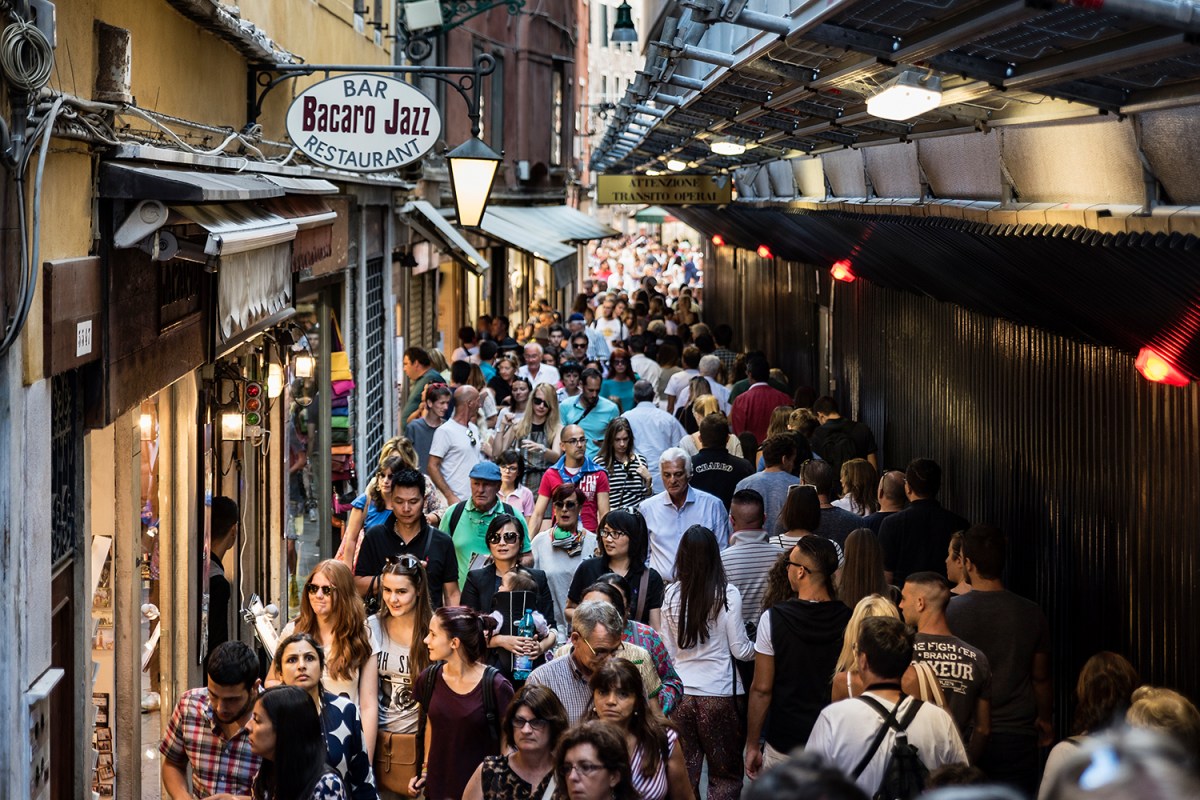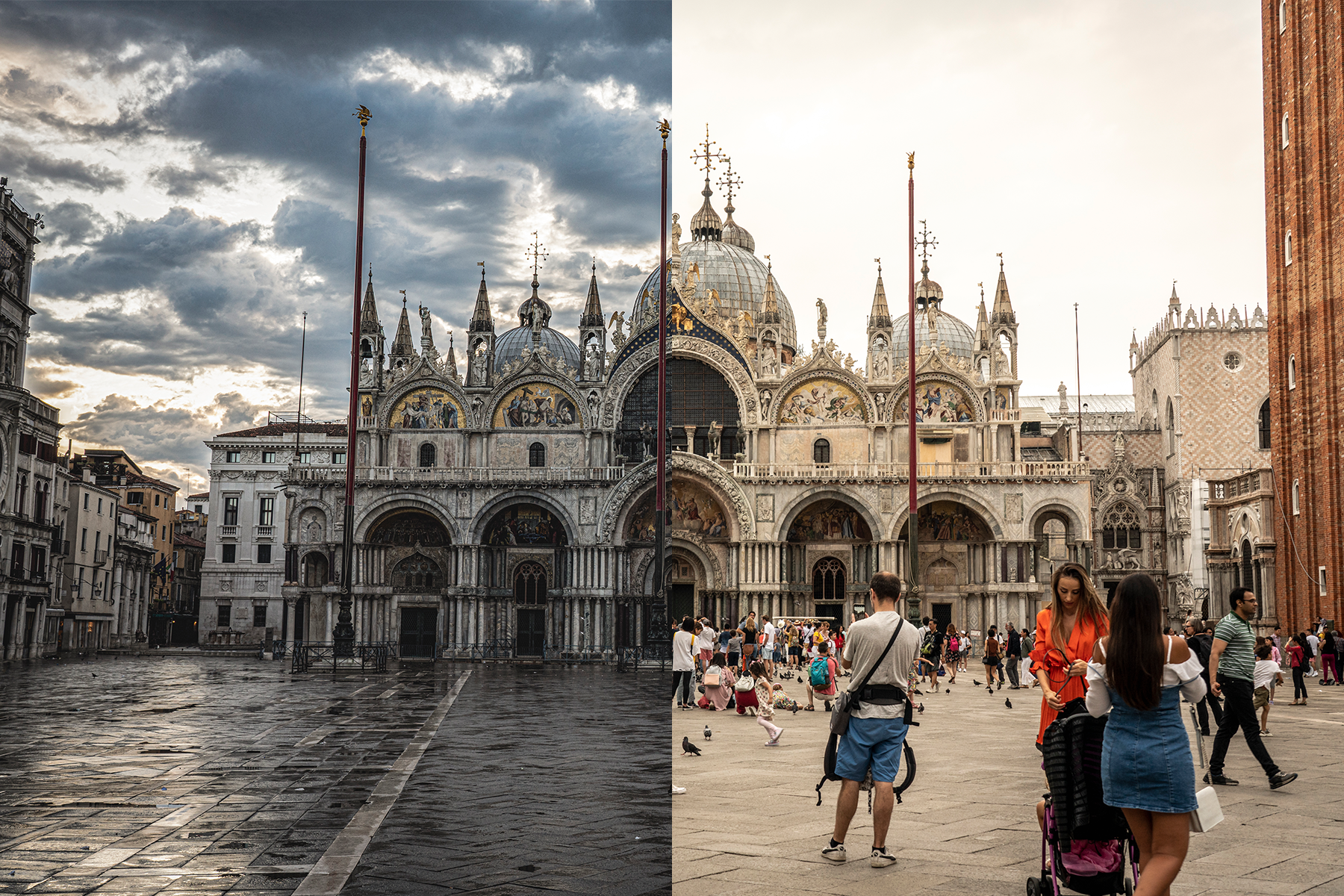In their latest attempt to stem the influx of tourists, Venieians are turning to technology. In September 2020, on the island of Tronchetto, a control center opened — the sole purpose of which is to virtually monitor the comings and goings of foreign visitors.
Fully equipped with a CCTV room, streaming live video from all over the city and an appropriately Orwellian-sounding “Smart Control ”room, the control center — which could be more accurately described as a control tower — also serves as headquarters to the Venetian police and government. While this in and of itself would imply that there is always someone watching that video, it’s actually not so much an outright attack on privacy as it is a genuine attempt to combat what has been called Europe’s worst tourism crisis.
Venice, a city boasting a population of right around 50,000, sees close to a whopping 30 million tourists a year. Canals and a handful of noteworthy places (St. Mark’s Square and the Rialto bridge, in particular) are consistently — and dangerously — saturated with eager sightseers, and The Sinking City has long struggled with a means of managing the crowds. Especially damaging to the city, according to Marco Bettini, the co-director general of the tech company who built the new monitoring system, are the daytrippers, who he deems “hit-and-run tourists.”
The installation of the control center will help city officials analyze and log both boat and pedestrian traffic while simultaneously noting patterns, though they are evidently much more interested in the latter. The system is able to count pedestrians using the cameras that have been placed in and around the city, and by using TIM — Telecom Italia — it is able to decipher who they are and where they’re from, according to CNN, though those details are “aggregated automatically” so “no personal details can be gleaned.” Rather, tourists are tracked by the country where their cell phone is registered (locals decided by the regularity in which they’re picked up by the system). All of this data then manifests itself into a sort of chart, where officials can monitor overcrowding in realtime.
When all is said and done, this is a project that took three years and $3.5 million to get off the ground and further renders Venice a kind of highbrow amusement park for monied adults — a far cry from the 1,200-year-old bastion of Italian art and culture it once was. But what would happen to Disney if it were left to the devices of millions of tourists from all over the world with no regulation to speak of?
It would (metaphorically) sink.
Thanks for reading InsideHook. Sign up for our daily newsletter and be in the know.


















